Last updated on June 1st, 2023
- What Does Trout Taste Like: Unraveling the Flavor Mysteries - August 2, 2023
- Best Fishing Bibs Tested & Reviewed: Buyer’s Guide - July 19, 2023
- Fishing for Whiskers: Best Bait for Catfish - July 12, 2023
Ice fishing is an exciting and rewarding way to spend time outdoors, but it can be intimidating for those who have never done it before. With the right equipment, knowledge of techniques and a bit of patience you’ll soon find yourself hooked on this unique form of angling! Whether you’re looking to catch bass or just enjoy some recreational ice fishing with friends, we’ve got all the tips and tricks you need. From understanding ice fishing basics to exploring different types of fish that make great catches – plus finding out what accessories are essential for your trip – get ready for an adventure like no other!
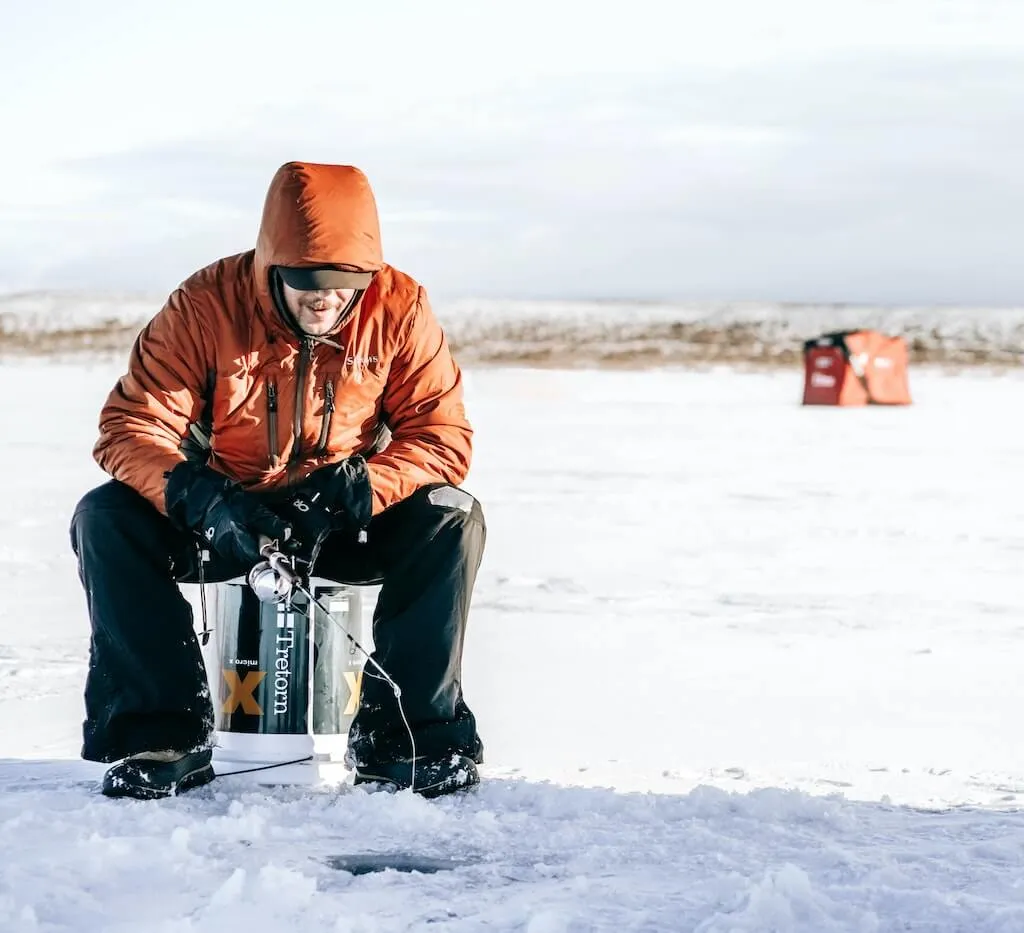

Table of Contents:
- Ice Fishing Basics
- Ice Fishing Tips and Techniques
- Types of Fish to Catch
- Ice Fishing Accessories to Make Your Trip Easier
- FAQs
- Conclusion
Ice Fishing Basics
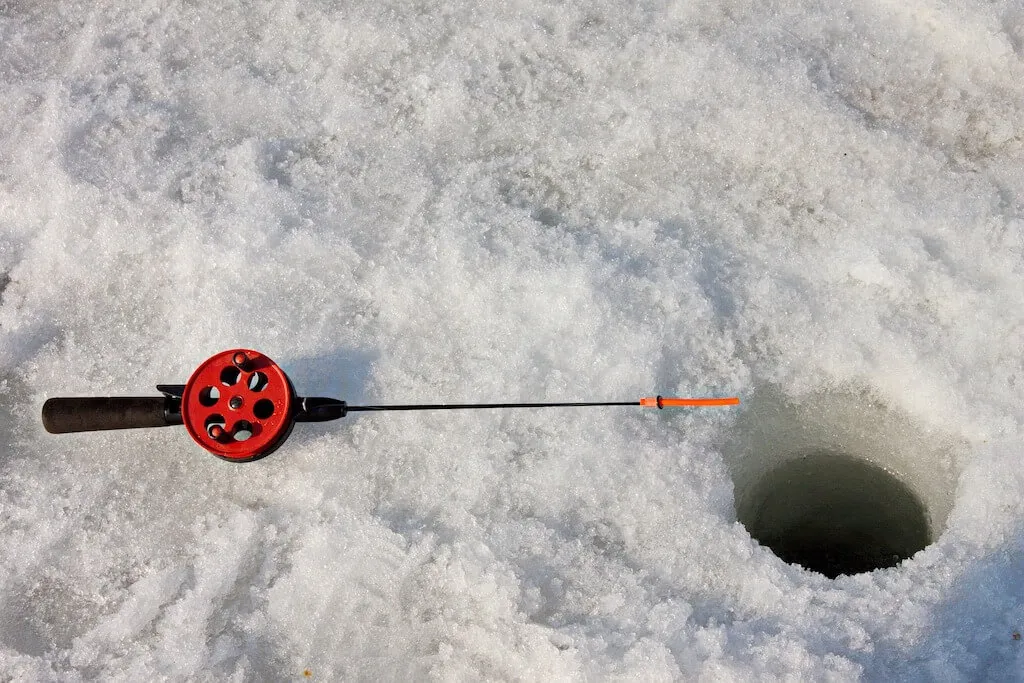

Ice fishing is a popular winter sport that requires the right gear and equipment to make your trip successful. Before you head out, it’s important to have all of the necessary items on hand. This includes an ice auger or chisel for drilling holes, a rod and reel with line and tackle, bait such as worms or minnows, and an ice scoop for removing slush from drilled holes. You may also want to bring along some basic safety items like a life jacket or flotation device in case of emergency.
Safety should always be top priority when heading out onto frozen lakes and ponds. Make sure you check local regulations regarding safe ice thickness before venturing out – typically 4-6 inches thick is considered safe enough for walking on but 8-12 inches is recommended if using motorized vehicles such as snowmobiles or ATVs. Additionally, wear appropriate clothing including insulated boots with cleats for traction, gloves to keep hands warm while handling wet lines, hats and scarves to protect against wind chill, etc., so you can stay comfortable throughout your day on the lake.
Finding the right spot can be tricky, but there are certain areas where fish tend to congregate during colder months such as near drop offs or weed beds which provide shelter from cold temperatures above them. To ensure success, it is important to study maps of your chosen lake beforehand so you know exactly where to go once you arrive at the shoreline. Additionally, pay attention for any signs of activity like bubbles rising up through cracks in the ice; this could indicate schools of fish below waiting eagerly for their next meal.
Ice fishing can be an exciting and rewarding experience. With the right gear, safety precautions, and a good spot to fish, you’ll be on your way to catching some great fish. Now that you have the basics down, let’s explore different fishing techniques for success.
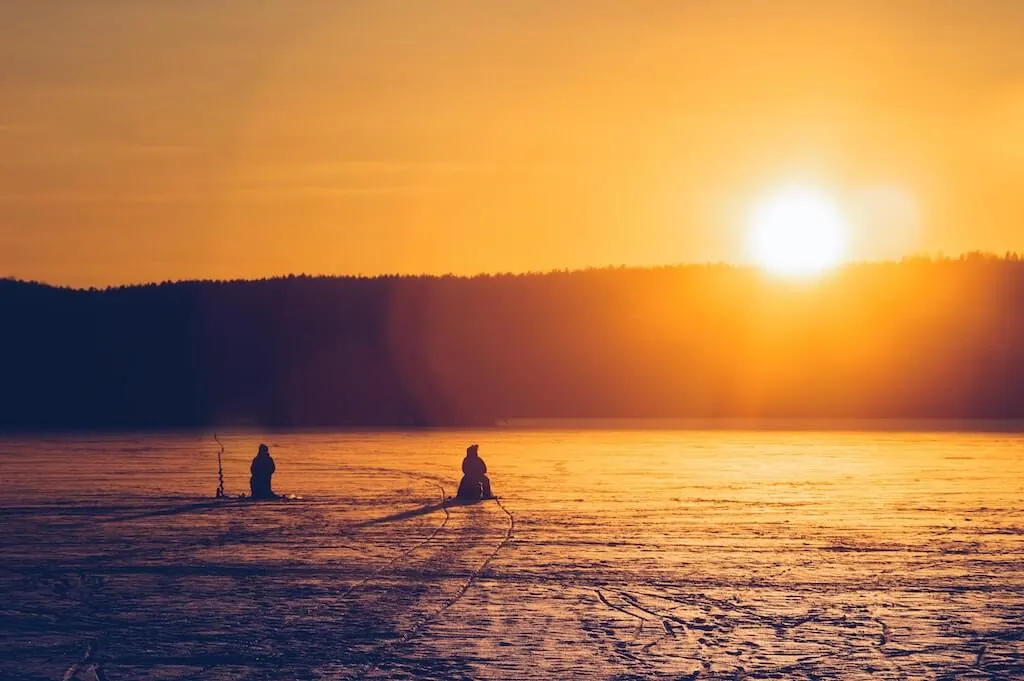

Key Takeaway: Ice fishing requires the right gear and safety precautions to ensure a successful trip. Necessary items include an augerchisel, rod & reel, bait, life jacket or flotation device, insulated boots with cleats, gloves and other clothing for protection against wind chill. Study maps of your chosen lake beforehand to find the best spots near drop offs or weed beds.
Ice Fishing Tips and Techniques
Jigging for Fish: Jigging is a popular ice fishing technique that involves using a jigging rod and lures to attract fish. To jig, you’ll need to drop your lure down the hole in the ice and then quickly raise it up again. This motion mimics the movement of small baitfish, which can draw in larger predators like walleye or pike. When done correctly, this method can be very effective at catching fish through the ice.
Drilling Holes and Setting Lines: Before you can start fishing with any technique, you’ll need to drill holes into the ice first. It’s important to use an auger specifically designed for drilling through thick layers of the frozen water; otherwise, it will take too long and require too much effort. Once your holes are drilled, set out your lines with baited hooks so they’re ready when you start fishing. Make sure each line is properly secured before moving on to other tasks.
Using Tip Ups and Rods: Tip ups are devices used by anglers that alert them when a fish has taken their bait without having to constantly watch their lines throughout the day. They work by setting off an alarm or flag when there is tension on one of your lines from a biting fish below. You can also use traditional rods if desired but tip ups provide more convenience since they don’t require constant attention from anglers while still allowing them to catch plenty of fish.
Fishing through the frozen water can be a rewarding experience for anglers of all levels, and with the right techniques and gear you can successfully catch a variety of fish. With that in mind, let’s explore some of the different types of fish to target through ice fishing.
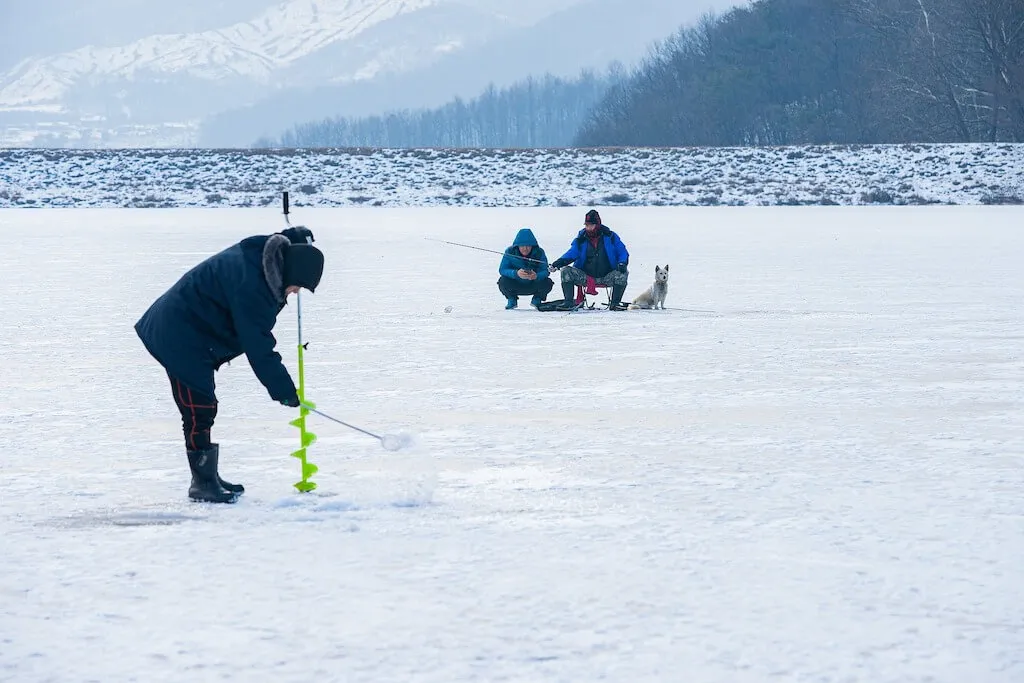

Ice fishing season is here. Grab your jigging rod, drill some holes in the ice, and set out your lines with tip ups or rods. Let’s get ready to reel in some fish. #IceFishing #FishingSeasonClick to Tweet
Types of Fish to Catch
Ice fishing is a great way to catch some of the most sought-after fish in the cold winter months. Whether you’re an experienced angler or just getting started, there are plenty of species that can be caught through ice fishing. Here are some of the best types of fish to target while out on the ice.
Trout and Salmon: Trout and salmon are two popular gamefish that can be found during wintertime in many lakes and rivers across North America. These fish feed heavily during this time, making them ideal targets for anglers looking for a good fight on their line. Jigging with small spoons or minnows is one of the most effective ways to catch these species when they’re actively feeding near bottom structure such as rocks, logs, or weed beds.
Walleye and Perch: Walleye and perch are both common catches throughout much of Canada and northern United States waters during late fall into early spring months. Both species tend to school up tightly together which makes them easy targets for anglers using jigs tipped with live bait such as worms or minnows suspended off bottom structure like rock piles or sunken timber areas where they congregate in large numbers seeking food sources.
Northern Pike and Catfish can also make excellent catches when targeting through ice fishing techniques. Northern Pike often suspend at mid depths around vegetation beds, waiting for unsuspecting prey items, while Catfish will usually stay close to bottom structures like rocky points searching for food sources such as crayfish, insects or frogs. Fishing with larger baits such as smelt strips fished slowly along these areas can result in big rewards from these powerful predators.
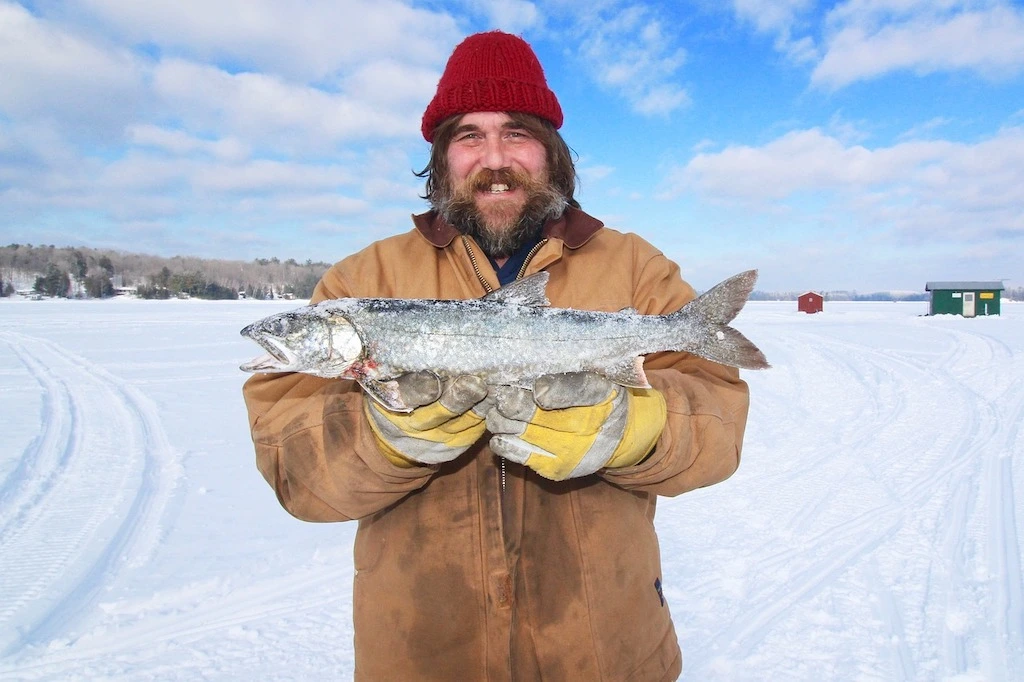

Key Takeaway: Ice fishing can be a great way to catch popular gamefish like trout, salmon, walleye, perch, northern pike and catfish. Jigging with small spoons or minnows near bottom structure is an effective technique for targeting these species in winter months.
Accessories to Make Your Trip Easier
When it comes to ice fishing, having the right gear is essential for a successful day on the ice. In my eyes, heaters, shelters, and augers are all important accessories that can make your trip easier and more enjoyable.
Heaters, Shelters, and Augers: When you’re out on the ice in cold weather conditions, having a reliable heater is key to staying warm and comfortable while you fish. Portable propane heaters are great for keeping an area of your shelter warm or providing extra warmth when needed. If you plan on spending extended periods of time out on the lake or river then investing in an insulated shelter with built-in heating capabilities may be worth considering as well. An auger is also necessary for drilling holes through thick layers of frozen water so that you can set up lines to catch fish. Manual hand augers work just fine but electric models will save you time and energy if they fit within your budget.
It is important to dress appropriately when going out onto frozen bodies of water, as hypothermia can become a serious issue very quickly if not properly prepared for cold temperatures. Layering clothing with waterproof materials, I like Gore-Tex a lot, will help keep moisture away from your skin while still allowing air circulation, which helps maintain body temperature better than bulky winter coats do alone. Additionally, wearing boots designed specifically for extreme cold weather conditions such as those made with Thinsulate insulation will provide additional protection against frostbite by trapping heat close to your feet while still allowing them room to breathe without becoming too sweaty inside their shoes/boots due to excessive activity levels outdoors during winter months.
Key Takeaway: To be successful and safe when ice fishing, make sure to have the right gear including a heater, shelter, auger and appropriate clothing such as layers of waterproof materials and cold weather boots.
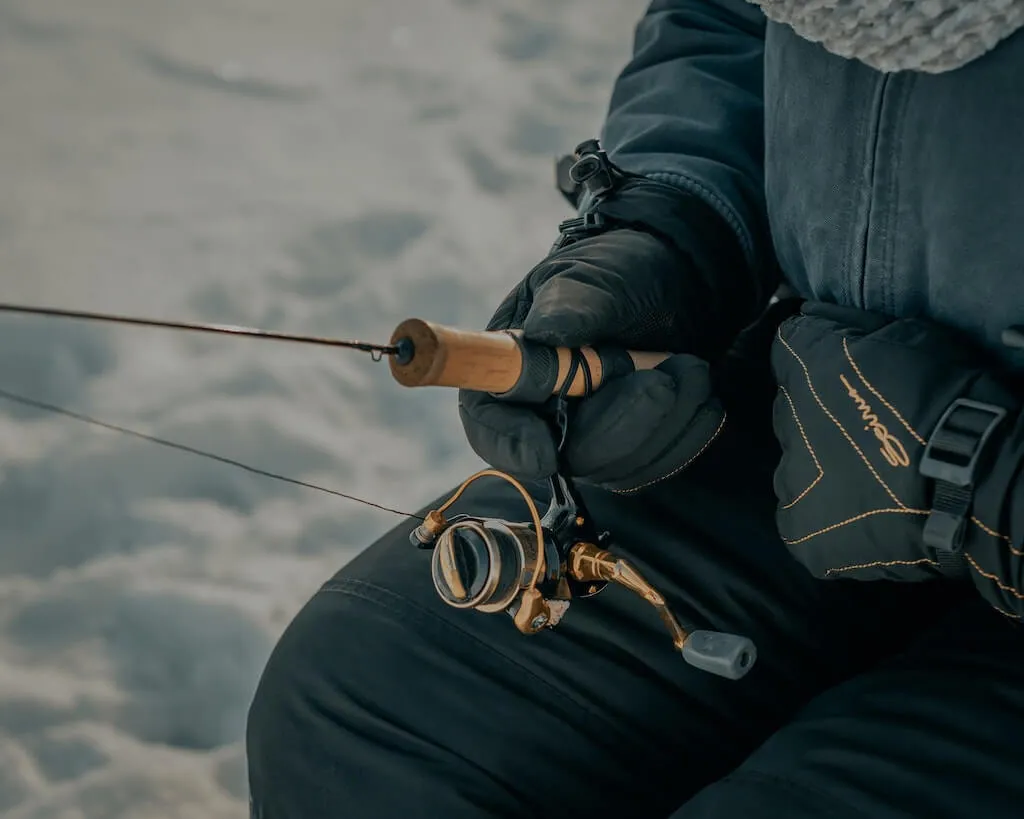

Conclusion
With proper preparation, technique, and the right gear you can have a successful ice fishing trip! Whether you’re an experienced angler or just starting out with ice fishing, it’s important to remember that safety should always come first. Have fun on your next ice fishing adventure!
Do you want to become an expert in ice fishing? Then join us! We offer the best advice and products for everything related to this exciting activity. Learn all about different types of tackle, lures, techniques, bass fishing, and recreational fishing from our experienced team. With our help you will be able to maximize your success on the water and have a great time while doing it!
FAQ
What is the point of ice fishing?
It involves drilling holes in the ice to access fish that have moved into deeper, colder waters during the cold season. Ice fishing can be done with either lures or bait, depending on the species of fish being targeted. Techniques such as jigging, tip-ups, and deadsticking are commonly used when ice fishing for bass and other gamefish. The point of ice fishing is to catch more fish than you would normally be able to do in open water due to the fact that they move into deeper waters during cold weather periods. It is also a great way to enjoy the outdoors in winter and spend time with friends or family.
When can you ice fish in Wisconsin?
Ice fishing in Wisconsin is allowed from the first Saturday in December through March 31st. Ice thickness must be at least 4 inches before any anglers can safely venture out onto the ice. Anglers should always check with local authorities to ensure that conditions are safe for ice fishing and never go alone. It is also important to have proper safety equipment such as a life jacket, rope, and an auger or spud bar when venturing out on the ice.
What other places are great for Ice Fishing?
If you want to travel outside the US, Canada and Scandinavia offer great ice fishing opportunities. One of our favorite countries to go to is Sweden. Particularly the Jämtland Härjedalen region close to the famous cross country ski resort Östersund is a great place to try ice fishing in the wintertime.
What is the best month to ice fish?
The best month to ice fish depends on where you are located. Generally, the coldest months of winter (December through February) are ideal for ice fishing in most parts of North America. However, some areas may have longer and colder winters that can extend into March or April. In these cases, it is important to check local weather conditions before heading out onto the ice. Ice thickness should also be monitored closely as it can vary greatly from one area to another depending on temperature and other factors such as snow cover or wind speed.
Is ice fishing easy?
Ice fishing can be an enjoyable and rewarding experience, but it is not necessarily easy. It requires knowledge of the right equipment, techniques, and safety measures to ensure a successful outing. Ice thickness should always be checked before venturing out onto frozen bodies of water. Additionally, proper bait selection and lure presentation are essential for catching fish through the ice. With some practice and patience, anglers can become proficient at ice fishing and have a great time doing so.
